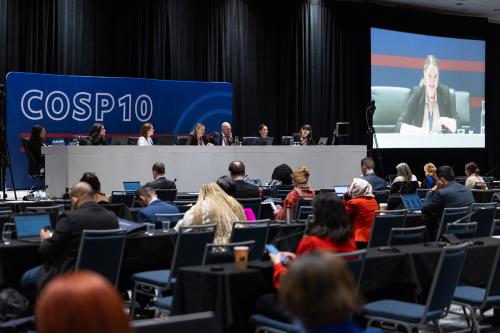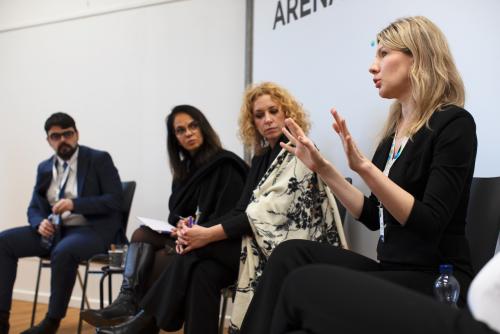How to curb corruption in natural disaster situations – and pandemics

Last week’s blog about corruption risks in natural disaster situations triggered some interesting feedback. Many observers are seeing the same as I am in the international response to the covid-19 pandemic – namely, that there are striking similarities with the response to earthquakes, tsunamis and other natural disasters in the past.
Of course, there are important differences too. A natural disaster is much more localised than a global pandemic, and the disruption is of a different sort. Nevertheless, I believe the seven recommendations my co-author and I put forward in our book chapter are relevant for practitioners and policymakers weighing up different approaches to corruption risks in the covid-19 response.
None are as straightforward as they sound below – is there anything simple in anti-corruption? – but I hope they inspire efforts to do as much as possible in these areas.
You can find the full recommendations and references in our original chapter here. It was published in 2009 in International Law and Standards Applicable in Natural Disaster Situations, edited by Erica Harper for IDLO.
1. Cooperation and coordination
The numerous actors involved in post-disaster relief and reconstruction – governments, NGOs, civil society organisations, donors, aid agencies, the private sector and affected communities – must coordinate to channel resources effectively and transparently to the people who need them.
Regular dialogue between actors and adopting consistent policies and procedures can reduce opportunities for corruption, enhance transparency, and strengthen mutual trust and accountability.
2. Country ownership
Local actors understand local realities and are generally best placed to assess actual needs. As long as realistic reconstruction strategies and action plans are in place, donors and aid agencies should respect host countries’ leadership in humanitarian relief and reconstruction operations and align their own work accordingly.
3. Capacity development
Building capacity among local actors – particularly in financial and administrative management – will support institutions in charge of overseeing and coordinating relief work. Capacity-building programmes should include the establishment or reinforcement of clear policies against fraud and corruption in both the public and private sectors, plus strengthening the function of the media as corruption watchdogs.
Beyond the immediate benefit in a crisis situation, combining short-term humanitarian assistance with this type of capacity development will contribute to longer-term development goals and ensure greater sustainability.
4. Broad participation in society
Lack of consultation with the ultimate beneficiaries may lead to inappropriate aid projects and further marginalisation of the people most affected. The entire aid process should therefore be people-centred and participatory.
This means, for example:
- involving all stakeholders in decision-making processes;
- incorporating existing local expertise and economic capacity;
- ensuring broad representation on the boards of any trust funds established to manage incoming assistance.
Working closely with local civil society organisations and communities can help ensure aid is accurately targeted and efficient, as well as contribute to local empowerment and a stronger sense of ownership.
5. Transparency and accountability
Transparent procedures and sound accountability mechanisms allow all stakeholders to appraise the intentions and actions taken in relief and reconstruction processes. This fosters mutual trust and confidence. The imperative for actors to disclose their activities and intentions pressurises them to act faithfully and channel aid to the most needy recipients.
Some valuable threads to draw together here include:
- establishing transparent mechanisms to monitor aid flows from source to end user;
- using teams to conduct needs assessments to ensure mutual supervision;
- ensuring clear communication using local languages and communication methods;
- implementing transparency mechanisms for public procurement processes, which may be fast-tracked due to the crisis. In addition to considering tools such as Integrity Pacts, governments should maintain minimum competitive tendering standards and proper documentation;
- insisting that governments and aid agencies, plus other stakeholders such as community leaders, commit themselves to full accountability for their activities. Audits, along with community oversight and participation, are essential tools here.
6. Monitoring, reporting and evaluation
Independent monitoring of aid flows and projects should complement internal controls in order to increase accountability and minimise corruption risks. Civil society organisations and beneficiary communities can play a powerful role here, along with effective complaints mechanisms for agency staff, the media and the general public.
These community-led monitoring and evaluation approaches (“people’s audits”) depend on freedom of expression and opinion. In their absence, anonymous whistleblowing channels and protections will be needed.
7. Establishment of enforcement mechanisms
Whistleblowing and corruption reporting systems are only as effective as their enforcement – so governments and aid agencies need clear policies for handling reports, and sanctions need to be properly and visibly enforced. Potential wrongdoers need to be given a clear message that corrupt practices will be investigated and sanctioned.




